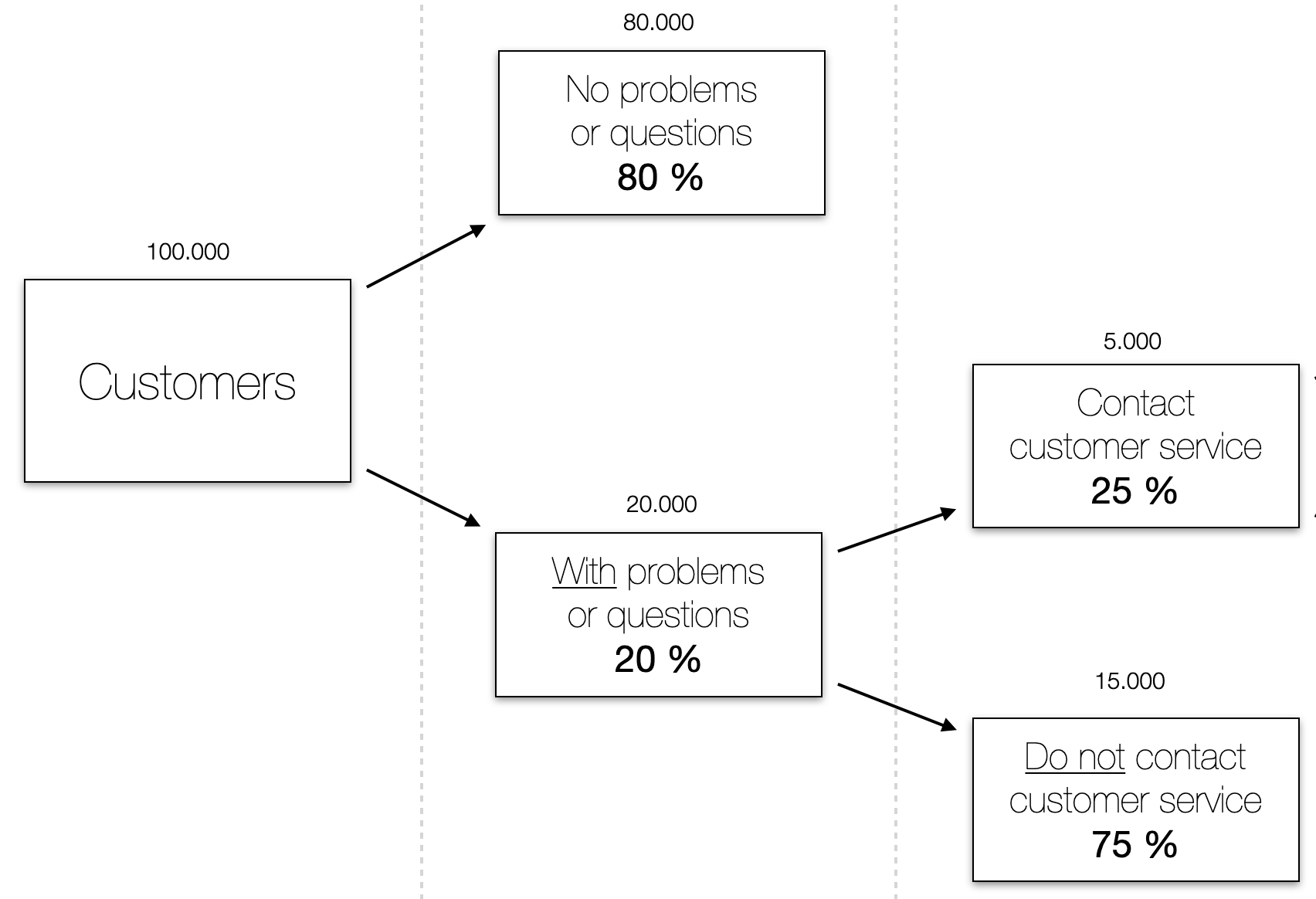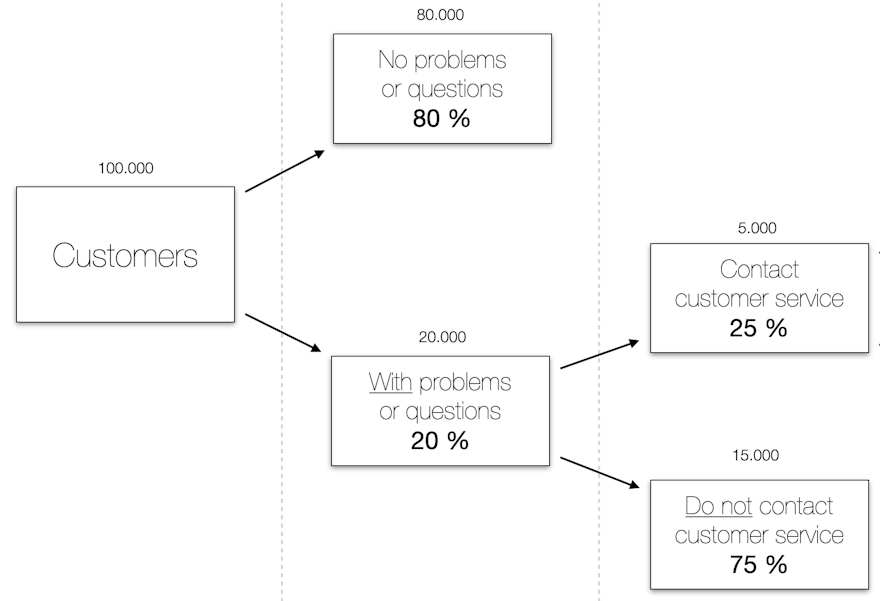Hidden customer churn risks
How silent customers and sub-optimal service quality can affect the revenue stream of your company. We use a typical product company as an example with benchmarked customer question volumes and satisfaction ratings.
Setting the scene

Let's consider a typical company that offers products. The company has 100.000 customers. On average, 80% of customers have no problems with the products received. 20% of customers do have issues. Of these 20% (20.000 customers) we'll say that 25% contact customer service with their problem, and 75% don't reach out at all. We'll consider this our starting point, the as-is situation.
Note that most customer with issues do not ask for help. In fact the 75% is a conservative figure according to studies. (2013 study executed by 1stfinancialtraining considering 500 companies in various sectors)
Silent customers
So 75% of customer with problems are not reaching out. Sounds great right? No, this poses a serious risk!
These customers have a high churn risk: some will simply leave, never come back and never buy your product again.
In a 2011 study conducted by the White House Office of Consumer Affairs this churn risk for these unhappy customers can range between 15% and 91%!
Later in this white paper we'll zoom in on why these customers aren't coming forward and what we can do about it.
Customer service quality
We define three outcomes for customers that decide to contact customer service: they are either satisfied, neutral or dissatisfied with the provided help.
These outcomes translate into respective churn risks. Clearly dissatisfied customers have the highest risk of leaving. This results in the complete diagram below.
The values used are benchmarks for the as-is situation of 100 product/service companies in various sectors. The churn risks assigned are conservative, in reality churn rates are often higher.

The strategy
The above diagram is the as-is situation. We have identified that there are 4600 customers at risk of leaving which will directly impact the company's revenue. Now what can we do:
- we improve customer service such that customers reaching out are more satisfied
- we make sure that more customers with problems reach out
- we'll try to make sure there are less problems or questions in the first place
Read our next blog to put this into action!


